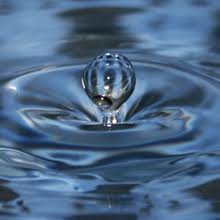 On the basis of the population indicated in 2011 census, the per capita water availability works out to be about 1545 cubic meter per year making India a water stressed country. According to Falkenmark Water Stress Indicator, water availability below 1700 cubic meter per capita per year indicates water stress condition. The challenges associated with this are to be dealt by taking steps for augmentation, conservation and efficient management of water resources. In addition, major challenges being faced in ground water are decline of levels due to over extraction and water pollution.
On the basis of the population indicated in 2011 census, the per capita water availability works out to be about 1545 cubic meter per year making India a water stressed country. According to Falkenmark Water Stress Indicator, water availability below 1700 cubic meter per capita per year indicates water stress condition. The challenges associated with this are to be dealt by taking steps for augmentation, conservation and efficient management of water resources. In addition, major challenges being faced in ground water are decline of levels due to over extraction and water pollution.
Water is a State subject and it is the primary responsibility of the States to take necessary measures to conceive, plan, execute and manage water resources projects. Several steps for augmentation, conservation and efficient management of water resources are taken up by the respective State Governments. In order to supplement the efforts of the State Government, Government of India provides technical and financial assistance to State Governments to encourage sustainable development and efficient management of water resources through various schemes and programmes. Government of India has launched National Water Mission with the objective of conservation of water, minimizing wastage and ensuring more equitable distribution both across and within states through integrated water resources development and management. One of the objectives of the Mission is to increase the water use efficiency by 20%. To achieve this objective, CADWM programme implementation and micro-irrigation will receive enhanced focus during the XII Plan . The on–going schemes of XI Plan like Accelerated Irrigation Benefits Programme (AIBP), Command Area Development & Water Management (CADWM) and Repair Renovation, and Restoration(RRR) of water bodies are being up-scaled in the XII Five Year plan.
To arrest decline of ground water levels, Central Ground Water Board has implemented demonstrative projects on rain water harvesting and artificial recharge during the XI Plan for replication by the State Governments under similar hydrogeological environments. Besides these measures, Central Ground Water Board has been taking steps for regulation of ground water development and for promoting rain water harvesting and artificial recharge.
Necessary measures to check pollution of ground water resources due to man-made activities are undertaken by the Central/ State Pollution Control Boards. In areas affected with problem of arsenic contamination in ground water, Central Ground Water Board undertakes studies for identification of arsenic free aquifers.
This information was given by Union Water Resources Minister Shri Harish Rawat in the Rajya Sabha today in reply to a written question on the challenges being faced in the water resource management; whether Government has proposed to meet these challenges; and the steps taken/proposed to be taken in the Eleventh and Twelfth Five Year Plans in this direction.
